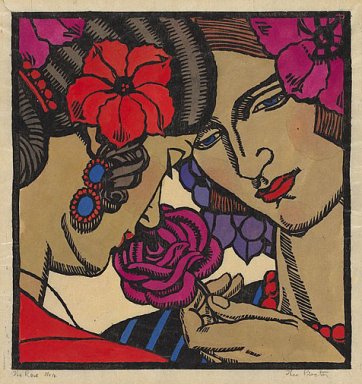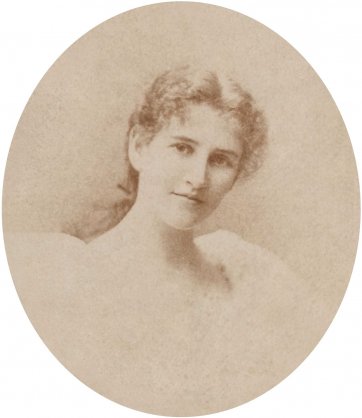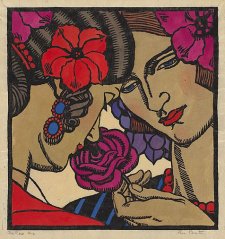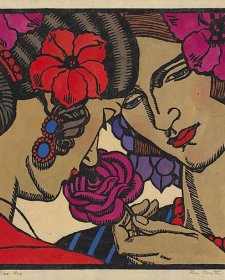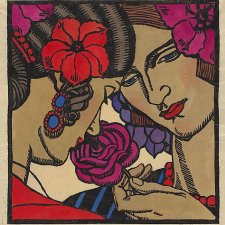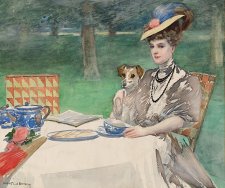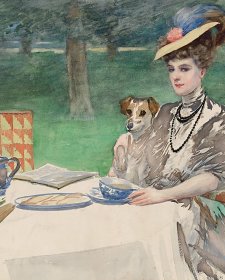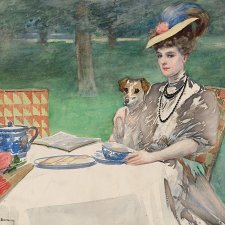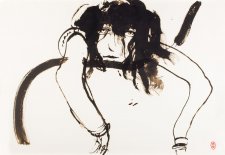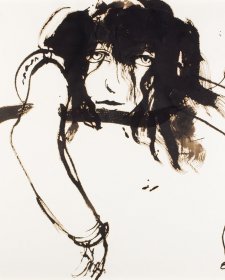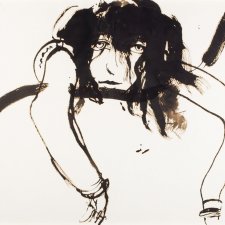Extending across the Oatley and Schaeffer wings of the National Portrait Gallery, The World of Thea Proctor will explore various phases and aspects of Proctor's artistic and personal life. It will examine influences on her work acquired during her time in London, her relationship to George Lambert and his family, her impact on Sydney's cultural life in the 1920s, her involvement in design, theatre, ballet and interior decoration. This is the first comprehensive exhibition on her work and contribution, with works drawn from state and national galleries as well as private collections nationally and overseas.
Thea Proctor: a memoir by Barry Humphries
The very first picture I ever bought was a design for a fan, painted on silk by Thea Proctor. I was only a schoolboy and I carried it proudly home from Leonard Joel’s auction rooms in Melbourne. The picture’s predominant association is with the work of Conder, an artist whom Miss Proctor knew personally, and who had a strong influence on her early work. In the thirties I think she came to regret this influence a little, and although her decorations owed a great deal to the spirit of Conder’s ornamental panels and fans, I have always felt that they had an individuality and strength of their own. They were sharper and more modern in feeling than the languorous caprices of Conder. He was a colourist, but Proctor could draw.
Years later I found myself in Sydney performing at the old Theatre Royal in Elizabeth Street, one of the city’s many treasures chucked away by the civic vandals and venal developers who in the late sixties and early seventies ruined Sydney. I went to the Macquarie Galleries, in the once charming Bligh Street, to one of their mixed exhibitions and there came upon a number of fresh and vigorous drawings of the nude signed Thea Proctor and dated ‘65’. I realised that someone whom I had always felt belonged essentially to the 1920s must still be alive. It was incredible to think that these drawings of such brilliance had been executed by an artist in the eighty-sixth year of her life. I longed to meet her and wondered how it could be arranged. My friend Patrick White knew everybody, especially artistic old ladies, being something of an artistic old lady himself. Patrick supplied me with an address and I wrote to Thea in the harbourside village of Double Bay. She wrote back immediately inviting me and my wife to tea. Together we called on the artist at her flat in Bay Street, which stood roughly where a fashionable women’s shoe store and a delicatessen stand today.
Miss Proctor received us in something between a tea gown and a peignoir. She was tall and still very beautiful, with her long hair caught back in a bun. One recognised without difficulty the striking young woman who appears in more than one of George Lambert’s most celebrated paintings. As she greeted us she stroked a large marmalade cat called Calico. The little flat into which we were ushered was furnished like a Thea Proctor decoration. Divans in bright chintzes were scattered with cushions, some covered with jazzy cubist textiles, others suggestive of the Russian ballet. A bright Manila shawl, embroidered in vermilion and lemon flowers, was thrown over a cane tabouret and held in place by a blue Canton China pitcher full of magenta roses. Had I but recognised it then, it was a ‘Bloomsbury’ interior transplanted in the antipodes. Her own paintings and decorations lined the walls along with drawings of herself by Lambert and a landscape or two by Sydney Long, a painter whose work was then hopelessly out of fashion. Thea later told me with a smile that Long had once made her a proposal of marriage.
In spite of the continuing support of the Macquarie Galleries, I realised that she had little money and her work was at variance with the prevailing vogue for Abstract Expressionism promoted by Sydney’s more modish eastern suburbs art dealers. To assist her and, let it be said, myself, I bought a few drawings from her gallery, also a magnificent pencil portrait of her by Lambert that she desired to sell. I asked her if she would accept a commission to make a portrait of my wife Rosalind and our small daughter, Tessa; and so we met regularly over the ensuing weeks for the sittings. It was simply a portrait in pencil and watercolour, but it captured the likeness of mother and child perfectly, and remains an excellent drawing. During these sittings, which were really extended afternoon tea parties, Thea discussed the artists she had known and of course her great love, George Lambert. She described in detail the famous fancy dress party that Charles and Stella Conder had given at their London house in Cheyne Walk in the early years of the century, when Conder turned up in the disguise of a gypsy organ grinder to everyone’s delight. She remembered these scenes from her youth in vivid detail and was full of amusing stories about Lambert, whose moustaches and goatee had once given great amusement to a group of ragamuffins on the front at Brighton. One of them, a particularly fat girl jeered ‘Look, there’s Father Christmas!’, pointing with glee at the bearded artist. ‘You’re mistaken young lady’, Lambert replied, ‘but I can see that Santa Claus has certainly stuffed your stockings!’
Her watercolours and graphic work are amongst the best decorative pictures made in their period, in Australia or anywhere. Now taste has swung in her favour and the present exhibition is a long overdue tribute to Proctor’s work. Deriving a little perhaps from French artists of the twenties, masters of the pochoir like Barbier and Lepape, she adds an Australian inflection all her own. There is a joie de vivre in these ladies with their sun hats and parasols disporting themselves at picnics at Balmoral Beach and at fêtes champetres in Centennial Park.
Her championing of other artists was always generous and unerring. In 1923 it was her vote, and Lambert’s, that won the New South Wales Society of Artists Travelling Scholarship for Roy de Maistre; and she urged me to visit a gallery in order to see the etchings of Elizabeth Rooney, whom she rightly felt to be very gifted. Another of her great enthusiasms was for the totally overlooked work of her cousin John Peter Russell, the Australian impressionist and friend of Monet and Van Gogh. She worked for a number of years, in vain as it turned out, to secure a representative collection of this important artist’s work for the Art Gallery of New South Wales.
Towards the end of my Sydney season, I invited Thea to my show at the Theatre Royal. She came with her relative and namesake, Thea Waddell, and certainly seemed to have enjoyed the matinee in spite of certain vaudevillian vulgarities that must surely have jarred her sensibilities. I provided her favourite tea (Lapsang Souchong) in the dressing room and she, in turn, presented me with the framed portrait as we vowed to meet each other again when I returned to Sydney from England the following year. At the stage door she took her leave and I clasped the hand of this most elegant and adorable woman. It was the last time.
